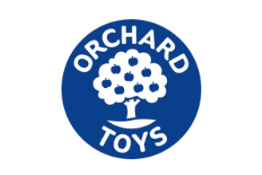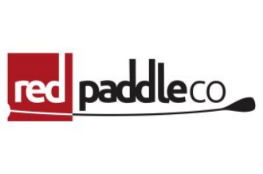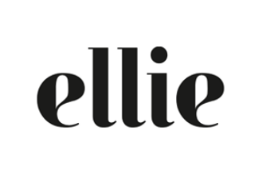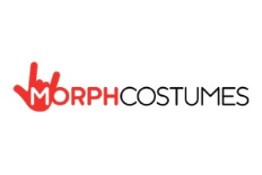GLOSSARY TERMS
Accessory Liability
The deliberate participation of a secondary party in a primary wrong committed by another renders the party liable to the victim of such infringement.
Account of profits
A restitutionary remedy which deprives the defendant of any benefit of his or her wrongdoing by awarding the profits so accrued to the claimant.
ADR
Alternative Dispute Resolution, a method of resolving disputes between parties, for example consumers and traders, without going to court. Arbitration and mediation are examples of ADR.
Breach of confidence
A party will be liable if material communicated to him or her had a necessary quality of confidence, was communicated or became known to the party in circumstances entailing an obligation of confidence and there was a subsequent unauthorised use of such material.
Cease and Desist
A demand, often by letter, alleging that the recipient is infringing the writer’s/client’s intellectual property rights. It may include a request to sign a declaration agreement/settlement to cease and desist the activity in question.
Community Registered Design
Introduced by Council Regulation 6/2002 (Community Design Regulation), the Community registered design right protects: ‘The appearance of the whole or a part of a product resulting from the features of, in particular, the lines, contours, colours, shape, texture and/or materials of the product itself and/or its ornamentation’. Registered Community designs are protected against similar designs even where the infringing design has been developed without knowing of the existence of the earlier design.
Community Unregistered Design
Introduced by Council Regulation 6/2002 (Community Design Regulation), the right in a Community unregistered design arises spontaneously without the need for any formalities. Unregistered Community designs grant the right to prevent commercial use of a design only if that design is an intentional copy of the protected one, made in the knowledge of the existence of the earlier design. Infringement of a Community unregistered design is dependent on proof of copying.
Conversion
The civil wrong of conversion is made out where one person by his or her deliberate conduct misappropriates goods belonging to another in a manner that is inconsistent with the latter’s rights of ownership or possession.
Copyright
Copyright is a legal term used to describe the rights that creators have over their literary and artistic works. Works covered by copyright range from books, films, music, paintings and sculptures to advertisements, computer programmes, databases, maps and technical drawings.
Counterfeit
Something made to resemble something it is not.Counterfeit fraud occurs when products such as designer clothes, accessories, electricals, cosmetics, toys, nursery products or even medicines are represented as authentic but are fake.
Cybersquatting
Bad faith or pre-emptive registration of another’s trade mark in a domain name. Cybersquatters exploit the first-come, first-served nature of the domain name registration system to register names of trademarks, people or businesses with which they have no connection. Cybersquatters often put the domain names up for auction or offer them for sale directly to the company or person involved. Alternatively, they use the name of the person or business associated with that domain name to attract business for their own sites.
Delivery up
Court have an inherent jurisdiction to order delivery up of articles made in or by infringement of a proprietary right.
Design right
An automatic intellectual property protection which applies to original, non-commonplace designs, protecting the design from being copied. Also known as unregistered design right.
Dilution
In the US, trade mark dilution occurs when a third party uses a mark or trade name that is sufficiently similar to a famous mark such that it harms consumer perception of the famous mark. ‘Blurring’ and ‘tarnishment’ are types of harm that arise a result. Unlike trade mark infringement, trade mark dilution involves use of a mark in connection with goods or services that do not compete with those connected to the famous mark.
Domain name
In the US, trade mark dilution occurs when a third party uses a mark or trade name that is sufficiently similar to a famous mark such that it harms consumer perception of the famous mark. ‘Blurring’ and ‘tarnishment’ are types of harm that arise a result. Unlike trade mark infringement, trade mark dilution involves use of a mark in connection with goods or services that do not compete with those connected to the famous mark.
E-commerce portals
We refer here to online marketplaces, Business to Business (B2B) webstores, social media sites and auction sites.
EUTM
European Union Trade Mark. This grants its proprietor an exclusive right to prevent all third parties that do not have consent from using the same or similar signs for identical or related goods and/or services as those protected by the EUTM in the course of trade. The EUTM system consists of one single registration procedure that gives its owner an exclusive right in the member states of the European Union.
Fair dealing
Certain activities which may be allowed without infringing copyright and which do not require permission from the copyright owner, for example, criticism, news reporting, private study and research.
Fair use
In the US, fair use is the legal doctrine which promotes freedom on expression by permitting the unlicensed use of copyright-protected works in certain circumstances – such as comment, criticism, news reporting, research, scholarship and teaching.
False attribution
The author of a work or a director of a film has the right not to have the work or the film falsely attributed to him or her.
Goodwill
Intangible asset of a business consisting of the reputation of that business or its products resulting from association of a trade mark with that business or product that provides added value to a company’s worth (such as a recognisable brand). Protection of goodwill is one of the main purposes of trade mark law.
ICANN
Internet Corporation for Assigned Names and Numbers, the body responsibility for Internet Protocol address allocation.
Infringement
Violation of an exclusive intellectual property right without the permission of the rights holder.
Injunction
A court order by which a person is required to refrain from doing a particular act or thing (prohibitory or restricitive injunction) or ordered to take a particular course of conduct (mandatory injunction).
Intellectual property
Intellectual property covers creations of the mind, such as inventions, literary and artistic works, designs and symbols, names and images used in commerce. Intellectual property is protected by copyright, industrial designs, patents and trade marks.
Intellectual property infringement
Intellectual property rights are infringed when a product, creation or invention protected by IP rights are exploited, copied or otherwise used without authorisation from the owner of those rights or their representative.
ISP
Internet Service Provider – an organisation which provides technical services enabling people to use the internet.
Know-how
Practical ability, knowledge and skill in a technical area. In intellectual property law this extends to component lists, discoveries, drawings, formulae, improvements, instructions, inventions, manuals, methods, processes, reports, specifications, technical information, techniques, tests and specific information relating to customers and suppliers.
Licence
Agreement that gives written permission to a party to use a property right otherwise belonging exclusively to another and which defines the terms of such use.
Malware
Malicious software used to disrupt computer operations, gather sensitive information or gain access to private computer systems.
Moral rights
Moral rights include the right to be identified as the author of a work or the director of a film, the right to object to derogatory treatment of a work or film, the right not to have a work or film falsely attributed to an author or director and the right to privacy of certain photographs and films. Moral rights cannot be assigned.
Notice and take down
Procedures under which internet intermediaries either remove or block access to illegal content, usually after receiving a request to do so.
Paris Convention
The Paris Convention for the Protection of Industrial Property, adopted in 1883, is an international treaty governing patents, trade marks and unfair competition. It is administered by WIPO.
Passing off
A passing off action is an action in which the claimant complains of conduct by the defendant calculated to pass off its goods or services as those of the claimant.
Patents
A product or process that provides a new way of doing something, or that offers a new technical solution to a problem can be protected by a patent. Patents protect technical inventions in all fields of technology by giving inventors the right, for a limited period, to prevent others from making, using or selling their invention without their permission in the territories for which the patent has been granted.
Phishing
Scams typically use fake emails, advertisements or websites to trick recipients into disclosing personal identity data such as birthdays, bank account and credit card details, passwords and usernames.
Piracy
The reproduction and distribution of copies of copyright-protected material or the communication to the public and making available of such material on online communication networks without the authorisation of owner of such rights, where such authorisation is required by law. Typical areas vulnerable to piracy include films, literature, music, software and video games.
Primary infringement
When a person does, or authorises another to do, any restricted act without the permission of the copyright owner. Primary infringers are strictly liable.
Registered design
A registered design right protects the appearance of the whole or part of a product, for example its physical shape, configuration or decoration.
Search engine
A set of computer programmes that finds web pages using specified keywords.
Secondary infringement
Secondary infringement occurs where works which infringe copyright are imported, possessed, dealt with or where their production is facilitated. Knowledge is required.
Seizure
The act of taking possession of or recovering goods or property because they are illegal.
WIPO
World Intellectual Property Organization. This United Nations agency is responsible for promoting the protection of intellectual property throughout the world by encouraging co-operation between nations.
TRIPS
Trade-Related Aspects of Intellectual Property Rights.
Trade mark
Marks which signal the origin of products to consumers. A trade mark may consist of any signs capable of being represented graphically, particularly words, including personal names, designs, letters, numerals, the shape of goods or of their packaging, provided that such signs are capable of distinguishing the goods or services of one undertaking from those of other undertakings.
Unfair competition
An act of competition contrary to honest practices in industrial or commercial matters, for example: acts of such nature as to create confusion with the establishment, goods or industrial or commercial activities of a competitor; false allegations in the course of trade of such a nature as to discredit the establishment, goods or industrial or commercial activities of a competitor; indications or allegations the use of which in the course of trade is liable to mislead the public as to the nature, manufacturing process, characteristics, suitability for their purpose or quantity of the goods.






